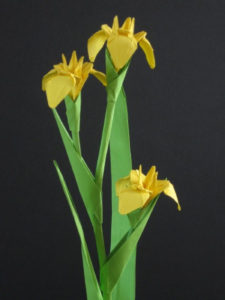 Contributed by special guest writer, Lindsey Shibata
Contributed by special guest writer, Lindsey Shibata
During the middle of 5th grade, my family picked up everything and moved to Kansas City, Missouri. It’s a place I’ll always remember because it was the first time I ever felt ashamed of being Japanese American.
Within the first week of my new school I was sitting in front of an overly excited ESL teacher who constantly shook with excitement whenever I did something correct. She handed me Kindergarten level storybooks and screeched after I read simple sentences. I was awarded condescending claps and candy; the candy didn’t taste as sweet after being praised for knowing something that I’d known since grade school. I began to believe that there was something wrong with the way I spoke. My self-confidence hit rock bottom, and I managed total silence for the entire week.
I was in constant conflict with myself; I started to blame my culture and ethnicity for my feelings. I started to throw away the “Japanese” part of myself by making sure people only knew the “American” part of me by telling kids I was from California. I believed that because of my Asian roots, people assumed I couldn’t speak proper English.
 I despised the way I was choosing to live; I hated being known as “the girl who couldn’t talk.” I loathed saying that I was born in California and tossing aside my Japanese culture. I knew I needed to change. Speaking out loud wasn’t an option yet, so I started to think of ways that I could express myself without using words: Japanese Origami. I brought in some origami one day and began to construct different things. As I started to build cranes and irises, people were lighting up with interest. I was spreading this Japanese art form throughout my class, and by the end, they were starting to make things too; I was able to leave them with a little part of my culture in the form of a small iris.
I despised the way I was choosing to live; I hated being known as “the girl who couldn’t talk.” I loathed saying that I was born in California and tossing aside my Japanese culture. I knew I needed to change. Speaking out loud wasn’t an option yet, so I started to think of ways that I could express myself without using words: Japanese Origami. I brought in some origami one day and began to construct different things. As I started to build cranes and irises, people were lighting up with interest. I was spreading this Japanese art form throughout my class, and by the end, they were starting to make things too; I was able to leave them with a little part of my culture in the form of a small iris.
I am a Japanese American, and right now, I embrace this identity. I love being different from everyone else; I enjoy telling people that I was born in Japan. I don’t let this fear and feeling of degradation get in the way of being proud of who I am. Through this experience, I’ve gained self-pride in my identity and continue to cherish my Japanese culture by expressing it without shame. Today, I don’t let anything make me feel ashamed of what it means to be a Japanese American girl.
 Bio: Lindsey Hikari Shibata is college student who was born in Okinawa, Japan. Her father is a third-generation Japanese American. Her mother is a native Okinawan. Lindsey moved to the US when she was 2-years-old and has lived in California, in Missouri, and currently resides in Portland, Oregon. She visits Okinawa every other year to maintain ties with her family and relatives, and she has traveled extensively in Japan to continue to learn and experience her native culture.
Bio: Lindsey Hikari Shibata is college student who was born in Okinawa, Japan. Her father is a third-generation Japanese American. Her mother is a native Okinawan. Lindsey moved to the US when she was 2-years-old and has lived in California, in Missouri, and currently resides in Portland, Oregon. She visits Okinawa every other year to maintain ties with her family and relatives, and she has traveled extensively in Japan to continue to learn and experience her native culture.
